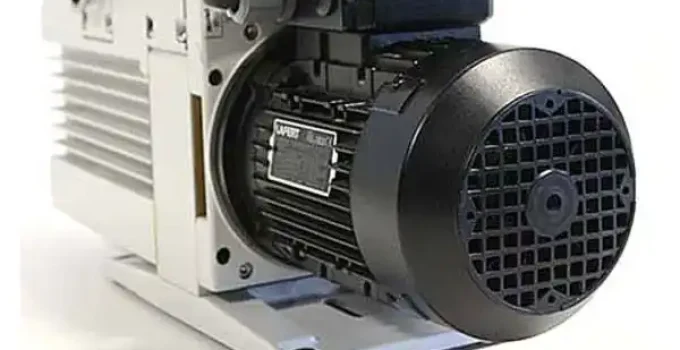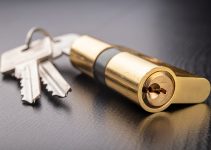As with any complicated and finely tuned piece of hardware, maintaining your vacuum equipment is paramount to it running safely and effectively. Using high-quality equipment like a Leybold, Edwards or Pfeiffer vacuum pump can significantly enhance the reliability and performance of your system. These pumps are known for their durability and precision, which helps in reducing the occurrence of leaks. However, vacuum leaks can still be a problem if they are not detected and repaired in a timely way.
This article discusses the types of leaks, how to find a leak, how to determine the severity of the leak, and potential dangers to be careful of during leak detection and repair.
What is a vacuum furnace leak?
Vacuum furnace leaks are holes (usually small) in one or several parts of the system that allow the uncontrolled entry or exit of gas. These can include cracks, openings, or any gaps that allow air to leak in or out of the vacuum furnace.
Vacuum furnaces are in deep or partial pressure vacuum during the heating phases and near atmospheric or positive pressure during the cooling phases. This combination of pressure and temperature makes seals loosen over time.
Most often, leaks happen when residue is left in the furnace. This residue is usually water left from cleaning or from the cooling chamber. Gas can also frequently become trapped during the heating phase. When the gas tries to escape, components can loosen or fail. A small volume of gas leaking out can continue to affect vacuum performance down the road.
To accurately identify and locate vacuum furnace leaks, helium leak detection equipment is employed. This advanced technology helps detect even the smallest leaks by using helium gas and a mass spectrometer to pinpoint the exact location of leaks.
Where do leaks occur?
There are several types of vacuum leaks to look for. The most common place for a leak to occur is any junction two pieces of the machine connect.
With all leaks, multiple types can be present at the same time. Physical leaks and outgassing are almost always present if it is a flat pressure leak and constantly reducing outgassing. So don’t stop looking once you find one form of leak, another may be right behind it.
Below are some examples of where to look for a leak.
O-ring leaks
O-ring leaks often occur at the furnace door seal or any other O-rings on the device.
Seals
There are four types of seals that might leak: high vacuum main valve seals, shaft seals on vacuum valves and particularly vacuum blower motors, compression seals as in thermocouple assemblies, wire feed-through glands, or thermocouple sheaths, and gasket seals on feedthroughs, manifolds, sight ports, or cylinder glands.
Feedthroughs
Feedthroughs are designed to pass matter or energy, without leakage, from the outside of a vacuum chamber to the inside. The main types of feedthroughs that may experience leaks are heat exchangers, pneumatic cylinders, heating element power, and general power.
Joints
Joints can be particularly vulnerable to leaks as they are transition points between two parts of the vacuum furnace. These include brazed and weld joints and threaded joints.
Other Potential Leak Locations
Other locations can include gas system flanges, internal furnace chamber welds, flexible connectors in piping, virtual leaks due to incorrect weld design, and water leaks (i.e., water to vacuum or jacket to vacuum).
How do you determine the leak rate?
In addition to finding leaks, you should pay attention to how big a leak is. The magnitude of a leak is referred to as the leak rate. The leak rate is found by looking at the amount of gas leaving the system per unit of time as found by a “Leak-Up-Rate” test. The leak rate is measured in microns per hour.
To do the leak rate test, heat the empty chamber to 100oF above the temperature used in the recent highest process. Maintain this heat for one hour to clean the furnace. Then, use nitrogen or argon gas to cool the furnace to ambient temperature. Keep the chamber closed and re-pump down to establish an ultimate vacuum level. Continue for about two hours before you valve off the vacuum pump and let the system sit. Finally, measure the rise in vacuum level. 10 microns per hour is considered acceptable in most vacuum furnaces. Anything above means you may have a leak in the furnace.
What are the various methods of checking for leaks?
While the leak rate test is incredibly important, it assumes that you already know there is a leak. So how do you find the leak in the first place? There are several commonly used methods of detecting vacuum furnace leaks. It is a good idea to remember that no single one of these methods will work in all situations.
Sound– You can listen for a sound coming from the hole where the leak originates. Often the gas leaving the hole will whistle or make another noise that you can detect with the naked ear.
Solvent– Use a solvent to penetrate the leak and then monitor the vacuum “jump” on the vacuum gauges.
Bubble test– Apply liquid dish soap to the joint of an active positively pressurized pipe or component. When a bubbly foam forms, you will know a leak is present.
Pump-down test– Evacuate a closed vacuum vessel to a predetermined pressure. Open the valve and record the time needed to return to the predetermined pressure. Repeat this process. If the same amount of time is needed to return to pressure there could be a leak.
Pressure rise test- Plot the vacuum level against the time after achieving a vacuum level. The line plot will be fairly straight if there is no major leak or outgassing. If the pressure change is abrupt, this could indicate leak(s) or major outgassing. A helium leak detector can be used to further investigate and confirm the presence of leaks, providing precise and accurate detection capabilities.
Pressure drop test– Similar to the pressure rise test, this test is only used when the positive pressure gauge is 1 bar or less.
Helium Leak Detector (Mass spectrometer)– Helium is added to the system where a leak is suspected, and the helium leak detector , along with the mass spectrometer, detects if helium flows through. The helium leak tester is a vital tool for initial screening and pinpointing leaks before using the more precise mass spectrometer for detailed analysis. (see below for more details on helium leak detectors.)
Helium Leak Detector
To use helium leak detection, connect your spectrometer to the vacuum and spray the helium into the area where a leak is detected. Then turn on the vacuum to approximately 10 Torr. The device should be able to find the leak, even in vacuum or pressure seals as well.
Please remember that when using the helium leak detector, the time it takes for the leak detector to respond indicates the general area of a leak.
Additional evaluation may be needed to find the exact location. There is often the possibility of more than one leak within the same area.
What precautions should you take when checking for leaks?
When using any of these methods for leak detection or determining leak rates, it is important to take precautions. Inhalation of certain gasses can be possible when administering tests. Many of the gasses frequently present in vacuum pump furnaces are heavier than air (such as the oderless argon), and can potentially result in asphyxiation if breathed for a period of time.
Oil diffusion pumps are also frequent causes for concern as they boil oil into a vapor. This process reaches thousands of degrees, making a great risk for burns and explosions of oil. These dangers make it clear that it is a complicated and detailed process to detect leaks. To do vacuum furnace maintenance safely and successfully, please proceed with caution. Or, even better, you can have your vacuum furnace checked by an experienced professional.
What helium leak detection services does A-VAC provide?
A-VAC offers both Helium Leak detectors and leak detection testing and servicing of helium leak detectors.
A-VAC Industries performs helium leak testing services at our facility in California. The test comes with a detailed Certificate of Conformance with pass/fail data.
A-VAC Helium Mass Spectrometer Testing Capabilities:
Pinpoint leak detection
Inside / Out / Sniffing, Outside / In Spray
Vacuum Chamber / Vacuum Systems
Permeation
Hood Testing
Sniffer probe
A-VAC Industries Tests the Following:
Chambers
Manifolds
Airbags
Feedthroughs
Brazed Joints
Valves
Vacuum Systems and Components
Road Wheels
Spools
Pressure Tanks
Welds
Heat Exchangers
Piping
Completed Assemblies & Sub Assemblies
Conclusions
Leak detection can be a complicated and detailed process. No system can ever be vacuum-tight…and indeed it need not be—it just needs to be manageable or at least low enough so that the operating pressure, gas balance, and ability to reach and maintain a final/ultimate pressure are not overly impacted.
All vacuum furnace users must eventually become experts in the “art” of leak checking or rely on a professional to test and service their vacuum equipment. Contact A-VAC for more information about leak detection or servicing your vacuum equipment.



